Multi-effects of galactooligosaccharides on aging intestines
- Normal Liver Cells Found to Promote Cancer Metastasis to the Liver
- Nearly 80% Complete Remission: Breakthrough in ADC Anti-Tumor Treatment
- Vaccination Against Common Diseases May Prevent Dementia!
- New Alzheimer’s Disease (AD) Diagnosis and Staging Criteria
- Breakthrough in Alzheimer’s Disease: New Nasal Spray Halts Cognitive Decline by Targeting Toxic Protein
- Can the Tap Water at the Paris Olympics be Drunk Directly?
Multi-effects of galactooligosaccharides on aging intestines
Multi-effects of galactooligosaccharides on aging intestines. Dietary GOS regulates the homeostasis of the aging intestine by promoting changes in microbial components and host gene expression. This change translates into reducing intestinal permeability and increasing mucus production.
As life gradually ages, the fragility of the gut microbiota and the consequent susceptibility to diseases become more prominent.
The abundance of Bifidobacterium, Faecalibacterium prausnitzii and Clostridium XIVa in the intestinal flora of the elderly decreased, while Clostridium perfringens, Escherichia coli, Enterococcus, Streptococcus, The abundance of Staphylococcus and Enterobacter is increased.
As a result, the aging human gut microbiota shows the deletion of genes related to the production of short-chain fatty acids (SCFAs) and the decreased ability to break down sugar, and decreased expression of starch, sucrose, galactose, glycolysis and gluconeogenesis pathways; The loss of cellulolytic microorganisms; and the overall enhancement of proteolytic function.
The prebiotic galactooligosaccharide (GOS) has a wide range of beneficial effects on intestinal health. Recently, researchers from the University of North Carolina School of Medicine published an article in “Microbiome” entitled “The pleiotropic effect of prebiotic galactooligosaccharides on aging intestines”.
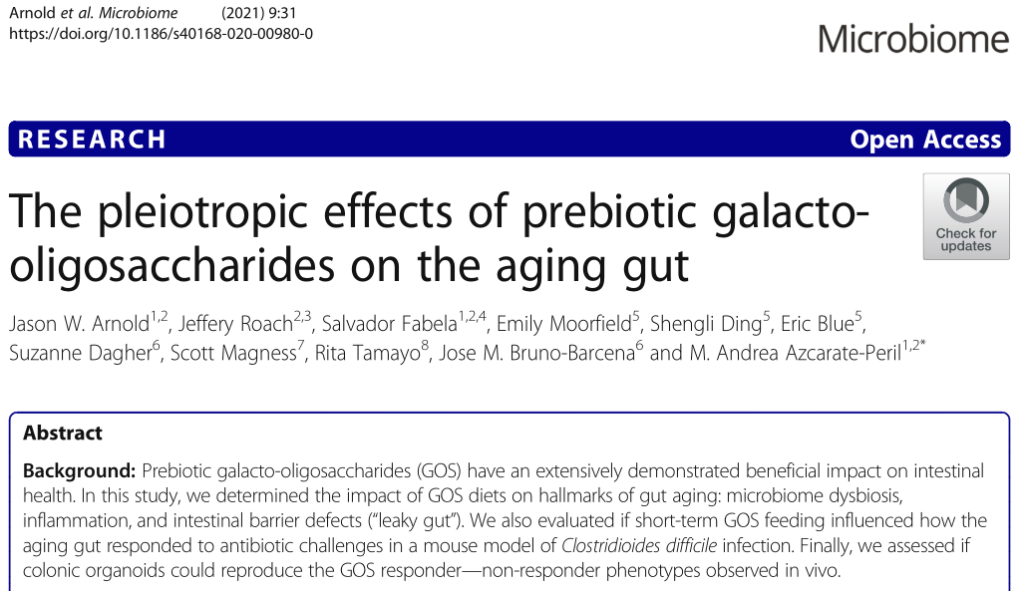
In this study, the researchers determined the effect of the GOS diet on the characteristics of intestinal aging.
In a mouse model of Clostridium difficile infection, the researchers also assessed whether short-term feeding of galactooligosaccharides affects the response of the aging gut to antibiotic challenges. Finally, assess whether the colon organoids can replicate the galactooligosaccharide response-non-responsive phenotype observed in vivo.
Results
Older animals have a unique microbiome, which is characterized by an increased ratio of non-saccharifying bacteria to saccharifying bacteria, and correspondingly, the abundance of β-galactosidase is lower.
Galactooligosaccharides reduce the overall diversity and increase the abundance of specific saccharifying bacteria (Bacteroides and Lactobacillus species).
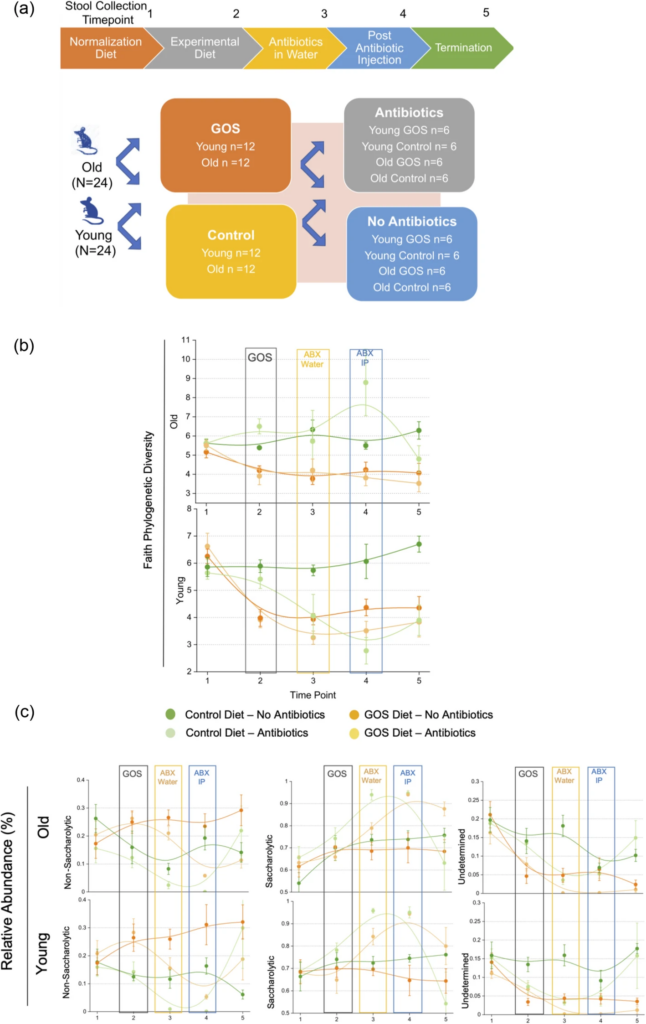
Increased the abundance of β-galactosidase in young and old animals, and increased non-saccharification organisms; however, no strong, uniform bifidus effect was observed.
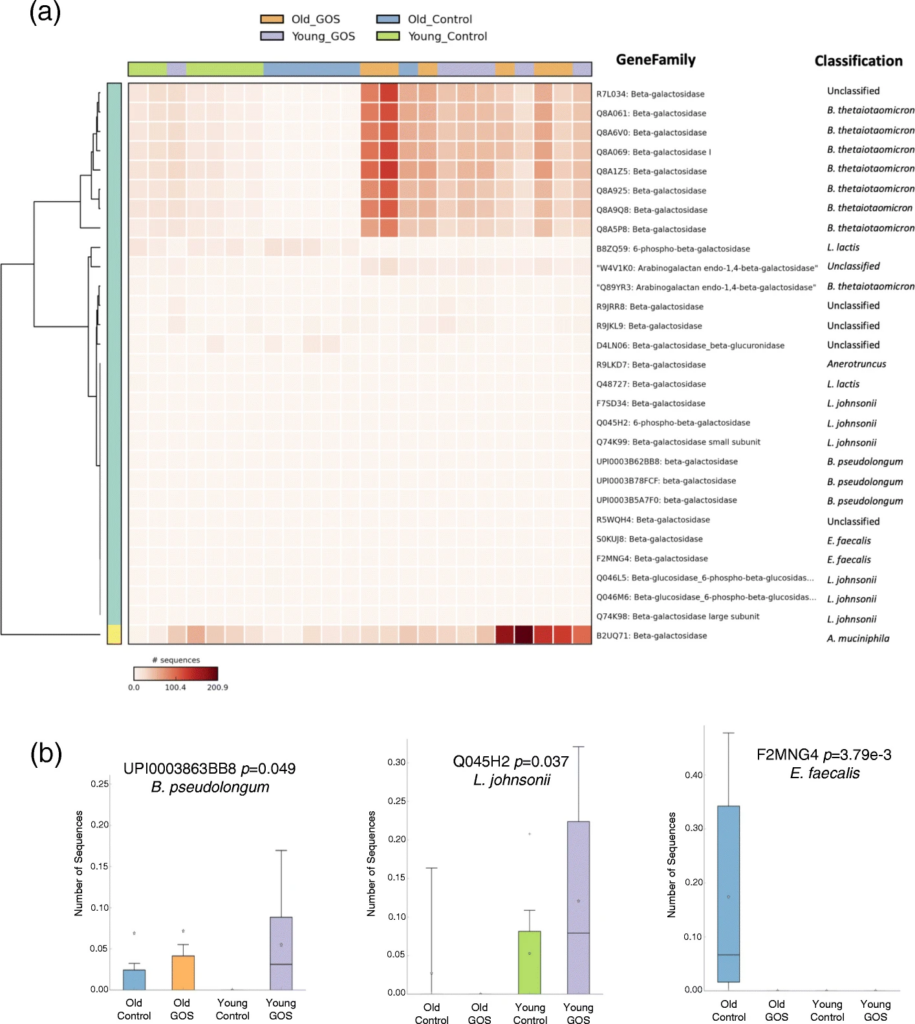
Galactooligosaccharide reduced the age-related increase in intestinal permeability in elderly mice, and increased the expression of MUC2 and the thickness of mucus.
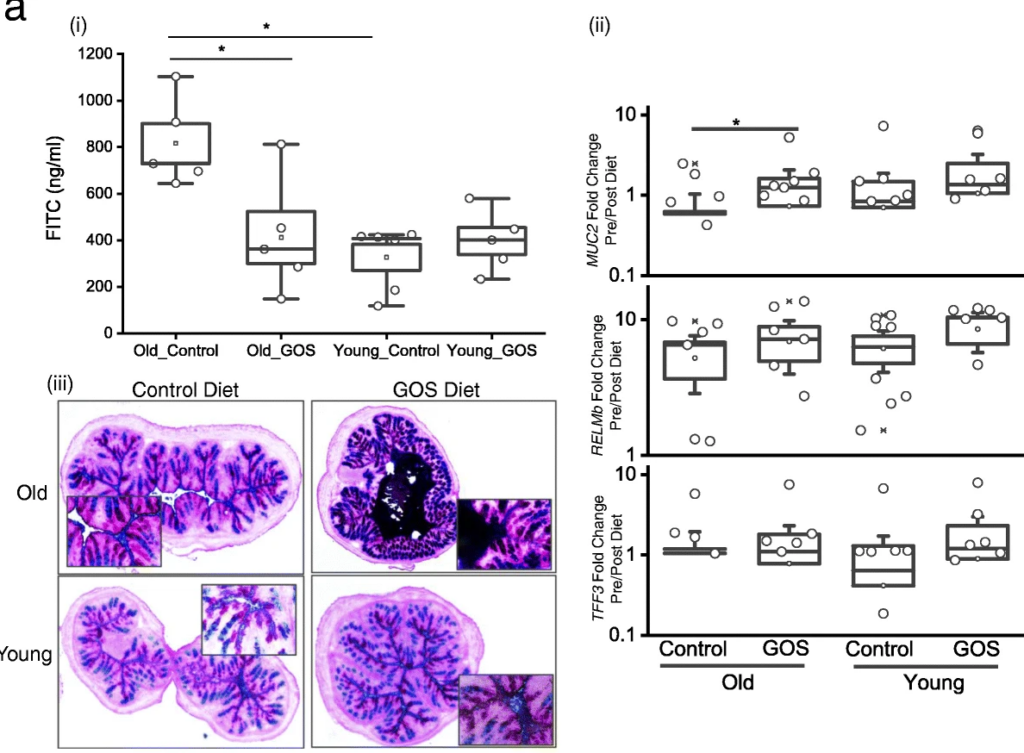
Antibiotics reduced the abundance of bifidobacteria in aged mice, and at the same time increased Akkermania, Clostridium, Faecoccus, Bacillus, Bacteroides and Rumenococcus.
Antibiotics are more effective than galactooligosaccharides in regulating serum inflammation markers. Higher serum IL-17 and IL-6 levels were observed in the control group of the antibiotic group and the galactooligosaccharide diet, and in these groups, regardless of age, the IL-6 level of the galactooligosaccharide group was higher And compared with the young animals of the control diet group, the IL-6 levels of the old animals were higher.

RTqPCR showed that the gene expression of TNFα in the distal colon tissue of old mice was significantly increased, and the galactooligosaccharide diet reduced this expression.

Colonic transcriptomics analysis showed that in old animals, small molecule metabolism, especially the expression of respiratory-related genes increased, which may indicate increased oxidative metabolism and energy efficiency.
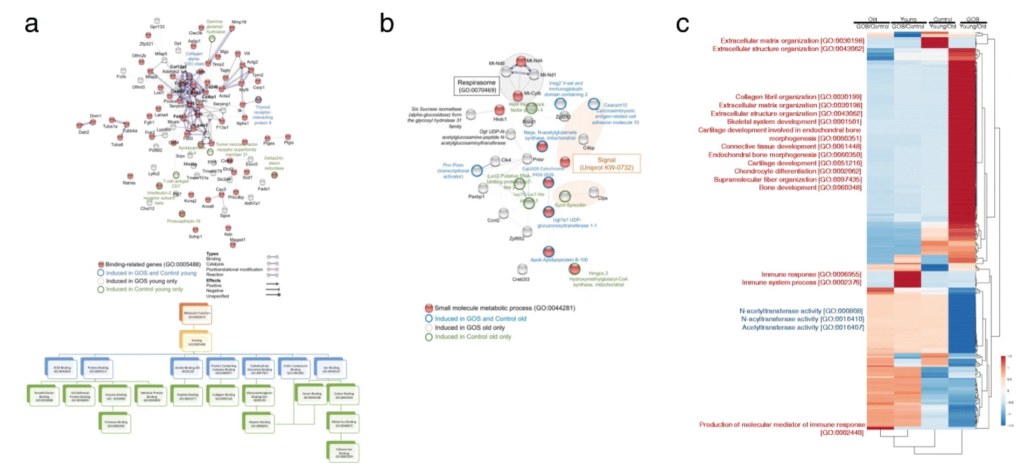
In young mice, galactooligosaccharides induced the expression of binding-related genes. The galectin gene Lgals1 is a β-galactose-binding lectin. Through its glycosyl linking molecule, it is an important regulator of immune response. The PI3K-Akt and ecm receptor interaction pathway is also induced in young mice .
In the presence of prebiotics, when GOS was injected into colonic organic matter, mouse feces showed a different bifidus effect, reproducing the responsive and non-responsive phenotypes observed in the body, indicating the composition and function of the microbiota Is the main contributor to the phenotype.
Conclusion
Dietary GOS regulates the homeostasis of the aging intestine by promoting changes in microbial components and host gene expression. This change translates into reducing intestinal permeability and increasing mucus production.
Age is a determinant of how prebiotics affect the microbiome and expression of intestinal epithelial cells, especially when galectin-1 is induced in young rather than old mice.
(source:internet, reference only)
Disclaimer of medicaltrend.org



